Research Areas
Machine Learning Security
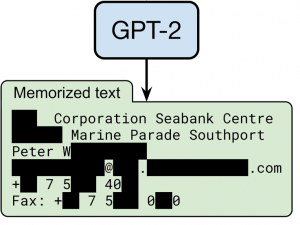 Prof. Florian Tramèr
Prof. Florian Tramèr
Machine learning systems are becoming critical components in various industries, yet they face clear security and privacy challenges. Attacks on a machine learning model’s data can destroy the integrity of the entire system; deployed models can memorize and leak sensitive training data; and models themselves can be copied and stolen. In our research, we study the behaviour of machine learning systems in adversarial settings, to better undestand the current limitations and risks of this nascent and booming technology. We then draw on this knowledge to propose new defense mechanisms to safeguard machine learning applications and their users.
 Prof. Florian Tramèr
Prof. Florian TramèrMachine learning systems are becoming critical components in various industries, yet they face clear security and privacy challenges. Attacks on a machine learning model’s data can destroy the integrity of the entire system; deployed models can memorize and leak sensitive training data; and models themselves can be copied and stolen. In our research, we study the behaviour of machine learning systems in adversarial settings, to better undestand the current limitations and risks of this nascent and booming technology. We then draw on this knowledge to propose new defense mechanisms to safeguard machine learning applications and their users.
Applied Cryptography
 Prof. Kenny Paterson
Prof. Kenny Paterson
Cryptography provides a fundamental set of techniques that underpin secure systems. It includes basic techniques to enable services such as confidentiality and integrity of data in secure communication systems, as well as much more advanced methods such as cryptographic schemes that enable searches over encrypted data. It draws broadly from theoretical computer science (algorithms, complexity theory), mathematics (number theory, probability) and engineering (both electronic- and software-engineering). Our research in Applied Cryptography brings all of these strands together to produce impactful research that improves the security of today’s and tomorrow’s cryptographic systems.
 Prof. Kenny Paterson
Prof. Kenny PatersonCryptography provides a fundamental set of techniques that underpin secure systems. It includes basic techniques to enable services such as confidentiality and integrity of data in secure communication systems, as well as much more advanced methods such as cryptographic schemes that enable searches over encrypted data. It draws broadly from theoretical computer science (algorithms, complexity theory), mathematics (number theory, probability) and engineering (both electronic- and software-engineering). Our research in Applied Cryptography brings all of these strands together to produce impactful research that improves the security of today’s and tomorrow’s cryptographic systems.
Blockchain Technology
 Prof. Srdjan Capkun
Prof. Srdjan Capkun
Blockchain technologies promise many attractive advantages for digital currencies, financial applications and digital society in general. These advantages include reduced trust assumptions, increased transparency, reduced costs and improved user privacy. However, the current state-of-the-art solutions suffer from significant limitations. In our research we investigate the limitations of current blockchain solutions and develop novel systems with improved security, privacy and performance guarantees. Examples of our research results include new types of smart contract execution environments, improved solutions for client privacy and novel digital currencies with regulatory support.
Blockchain technologies promise many attractive advantages for digital currencies, financial applications and digital society in general. These advantages include reduced trust assumptions, increased transparency, reduced costs and improved user privacy. However, the current state-of-the-art solutions suffer from significant limitations. In our research we investigate the limitations of current blockchain solutions and develop novel systems with improved security, privacy and performance guarantees. Examples of our research results include new types of smart contract execution environments, improved solutions for client privacy and novel digital currencies with regulatory support.
Constructive Cryptography
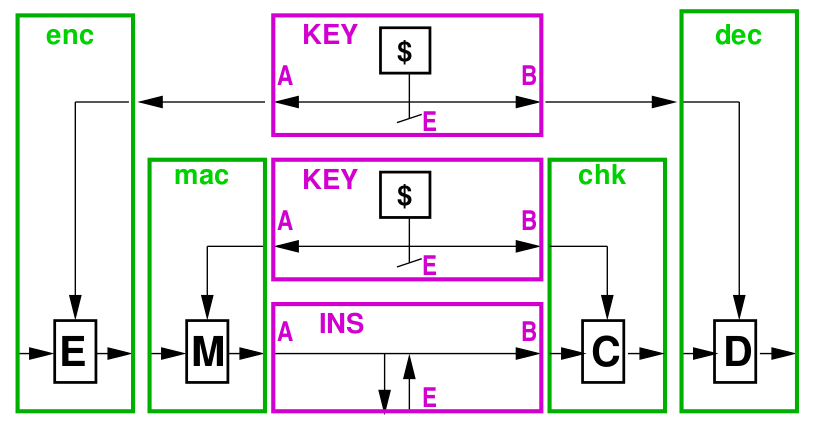 Prof. Ueli Maurer
Prof. Ueli Maurer
Constructive cryptography is a new paradigm for defining the security of cryptographic schemes. It allows to take a new look at cryptography and the design of cryptographic protocols. One can give explicit meaning to various types of game-based security notions of confidentiality, integrity, and malleability, one can design key agreement, secure communication, certification, and other protocols in a modular and composable manner, and one can separate the understanding of what cryptography achieves from the technical security definitions and proofs, which is useful for didactic purposes and protocol design.
 Prof. Ueli Maurer
Prof. Ueli MaurerConstructive cryptography is a new paradigm for defining the security of cryptographic schemes. It allows to take a new look at cryptography and the design of cryptographic protocols. One can give explicit meaning to various types of game-based security notions of confidentiality, integrity, and malleability, one can design key agreement, secure communication, certification, and other protocols in a modular and composable manner, and one can separate the understanding of what cryptography achieves from the technical security definitions and proofs, which is useful for didactic purposes and protocol design.
Secure Positioning and Localization
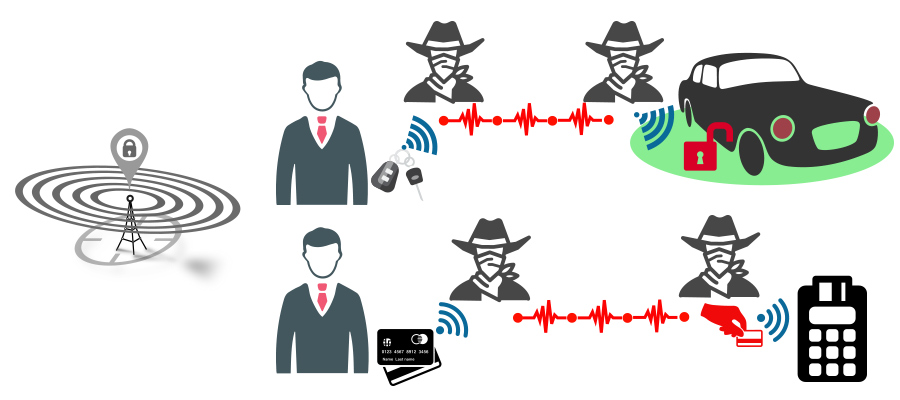 Prof. Srdjan Capkun
Prof. Srdjan Capkun
In our daily lives, we increasingly rely on location and proximity measurements for important applications. Already today, people issue contactless payments simply by bringing their credit card close to a card reader. Modern cars automatically detect the key in proximity to unlock the doors. We see first instances of autonomous transportation drones navigate using GPS or Galileo. The security of many existing and future applications surrounding navigation, access control, and secure routing critically depends on the correctness of the underlying location and proximity estimates.
In our daily lives, we increasingly rely on location and proximity measurements for important applications. Already today, people issue contactless payments simply by bringing their credit card close to a card reader. Modern cars automatically detect the key in proximity to unlock the doors. We see first instances of autonomous transportation drones navigate using GPS or Galileo. The security of many existing and future applications surrounding navigation, access control, and secure routing critically depends on the correctness of the underlying location and proximity estimates.
Smartphone Security
 Prof. Srdjan Capkun
Prof. Srdjan Capkun
Smartphones are mobile devices carried around by billions of people everyday and used for both personal and business activities, more often than not on the same device. Many people use their smartphones for social-media interaction (e.g., Facebook, Twitter, Instagram), for their day-to-day private life (e.g., making and receiving calls and messages from relatives or friends, taking pictures, accessing their online banking accounts), as well as for their business activities (e.g., receiving and composing e-mails, reading work-related documents, accessing corporate functions or data through a VPN).
Smartphones are mobile devices carried around by billions of people everyday and used for both personal and business activities, more often than not on the same device. Many people use their smartphones for social-media interaction (e.g., Facebook, Twitter, Instagram), for their day-to-day private life (e.g., making and receiving calls and messages from relatives or friends, taking pictures, accessing their online banking accounts), as well as for their business activities (e.g., receiving and composing e-mails, reading work-related documents, accessing corporate functions or data through a VPN).
Future Internet Architecture SCION
 Prof. Adrian Perrig
Prof. Adrian Perrig
SCION is the first clean-slate Internet architecture designed to provide route control, failure isolation, and explicit trust information for end-to-end communications. SCION organizes existing ASes into groups of independent routing sub-planes, called isolation domains, which then interconnect to form complete routes. Isolation domains provide natural isolation of routing failures and human misconfiguration, give endpoints strong control for both inbound and outbound traffic, provide meaningful and enforceable trust, and enable scalable routing updates with high path freshness. As a result, the SCION architecture provides strong resilience and security properties as an intrinsic consequence of good design principles, avoiding piecemeal add-on protocols as security patches.
SCION is the first clean-slate Internet architecture designed to provide route control, failure isolation, and explicit trust information for end-to-end communications. SCION organizes existing ASes into groups of independent routing sub-planes, called isolation domains, which then interconnect to form complete routes. Isolation domains provide natural isolation of routing failures and human misconfiguration, give endpoints strong control for both inbound and outbound traffic, provide meaningful and enforceable trust, and enable scalable routing updates with high path freshness. As a result, the SCION architecture provides strong resilience and security properties as an intrinsic consequence of good design principles, avoiding piecemeal add-on protocols as security patches.
Monitoring
 Prof. David Basin
Prof. David Basin
It is a growing concern for companies, administrations, and end users alike whether IT systems comply with policies regulating the usage of sensitive data. Checking compliance is particularly acute as our modern infrastructures (communication, entertainment, finance, etc.) collect, process, and share data. A prominent approach to compliance checking is runtime monitoring. Here, system actions are observed and automatically checked for compliance against a given policy. We develop efficient and scalable monitoring algorithms for expressive policy specification languages, e.g., metric first-order temporal logic. We are also interested in policy enforcement, that is, preventing policy violations instead of only detecting them.
It is a growing concern for companies, administrations, and end users alike whether IT systems comply with policies regulating the usage of sensitive data. Checking compliance is particularly acute as our modern infrastructures (communication, entertainment, finance, etc.) collect, process, and share data. A prominent approach to compliance checking is runtime monitoring. Here, system actions are observed and automatically checked for compliance against a given policy. We develop efficient and scalable monitoring algorithms for expressive policy specification languages, e.g., metric first-order temporal logic. We are also interested in policy enforcement, that is, preventing policy violations instead of only detecting them.
Access control
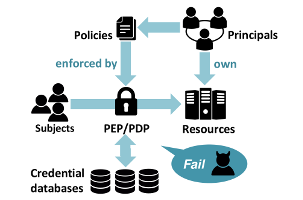 Prof. David Basin
Prof. David Basin
Access control has wide range of applications, from physical access control, e.g., to buildings, over to access control in single applications, to enterprise-wide access control solutions for an entire company’s data management. Our work covers multiple facets of the challenges in effective access control. We work on languages for efficiently analyzable yet expressive access control policies, techniques for ensuring that no security-critical access control queries are omitted, mining access control policies, and modern systems for access control in physical systems.
Access control has wide range of applications, from physical access control, e.g., to buildings, over to access control in single applications, to enterprise-wide access control solutions for an entire company’s data management. Our work covers multiple facets of the challenges in effective access control. We work on languages for efficiently analyzable yet expressive access control policies, techniques for ensuring that no security-critical access control queries are omitted, mining access control policies, and modern systems for access control in physical systems.
Security Protocol Verification
 Prof. David Basin
Prof. David Basin
We develop tools for security protocol analysis in the symbolic model, particularly the Tamarin-prover. Security protocols are well-known to be error-prone, thus having a formal analysis enhances trust in the protocol’s correctness. Our tools have theoretic foundations guaranteeing their conceptual correctness. The symbolic model has a high level of abstraction compared to bitstrings over the wire, but provides automation and the ability to consider all modes of operation of a protocol at once. Practical results and impact has been seen in the standardization of TLS v1.3 and the analysis of the next-generation 5G mobile communication key exchange protocol 5G-AKA.
We develop tools for security protocol analysis in the symbolic model, particularly the Tamarin-prover. Security protocols are well-known to be error-prone, thus having a formal analysis enhances trust in the protocol’s correctness. Our tools have theoretic foundations guaranteeing their conceptual correctness. The symbolic model has a high level of abstraction compared to bitstrings over the wire, but provides automation and the ability to consider all modes of operation of a protocol at once. Practical results and impact has been seen in the standardization of TLS v1.3 and the analysis of the next-generation 5G mobile communication key exchange protocol 5G-AKA.
Trusted Execution Beyond CPUs
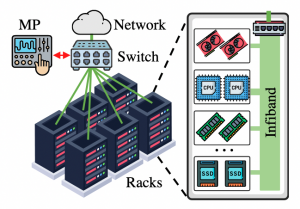 Prof. Shweta Shinde
Prof. Shweta Shinde
Modern data centers have grown beyond CPU nodes to provide domain-specific accelerators such as GPUs and FPGAs to their customers. From a security standpoint, cloud customers want to protect their data. They are willing to pay additional costs for trusted execution environments such as enclaves provided by Intel SGX and AMD SEV. Unfortunately, the customers have to make a critical choice—either use domain-specific accelerators for speed or use CPU-based confidential computing solutions. To bridge this gap, we are building data-center scale confidential computing that expands across CPUs and accelerators. Having wide-scale TEE-support for accelerators presents a technically easier solution, but is far away from being a reality. Instead, we aim to provide enclaved execution guarantees for computation distributed over multiple CPU nodes and devices with/without TEE support, which presents security, scalability, and performance challenges.
Modern data centers have grown beyond CPU nodes to provide domain-specific accelerators such as GPUs and FPGAs to their customers. From a security standpoint, cloud customers want to protect their data. They are willing to pay additional costs for trusted execution environments such as enclaves provided by Intel SGX and AMD SEV. Unfortunately, the customers have to make a critical choice—either use domain-specific accelerators for speed or use CPU-based confidential computing solutions. To bridge this gap, we are building data-center scale confidential computing that expands across CPUs and accelerators. Having wide-scale TEE-support for accelerators presents a technically easier solution, but is far away from being a reality. Instead, we aim to provide enclaved execution guarantees for computation distributed over multiple CPU nodes and devices with/without TEE support, which presents security, scalability, and performance challenges.
Sovereign Smartphone
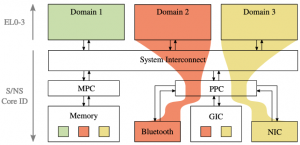 Prof. Shweta Shinde
Prof. Shweta Shinde
The majority of smartphones either run iOS or Android operating systems. This has created two distinct ecosystems largely controlled by Apple and Google—they dictate which applications can run, how they run, and what kind of phone resources they can access. Barring some exceptions in Android where different phone manufacturers may have influence, users, developers, and governments are left with little control. Specifically, users need to entrust their security and privacy to OS vendors and accept the functionality constraints they impose. Given the wide use of Android and iOS, immediately leaving these ecosystems is not practical, except in niche application areas. We are building a new smartphone architecture that securely transfers the control over the smartphone back to the users while maintaining compatibility with the existing smartphone ecosystems. Our architecture, named TEEtime, implements novel TEE-based resource and interrupt isolation mechanisms which allow the users to flexibly choose which resources (including peripherals) to dedicate to different isolated domains, namely, to legacy OSs and to user’s proprietary software. We have shown the feasibility of TEEtime design via a prototype on ARM platform and are working towards building a fully functional phone.
The majority of smartphones either run iOS or Android operating systems. This has created two distinct ecosystems largely controlled by Apple and Google—they dictate which applications can run, how they run, and what kind of phone resources they can access. Barring some exceptions in Android where different phone manufacturers may have influence, users, developers, and governments are left with little control. Specifically, users need to entrust their security and privacy to OS vendors and accept the functionality constraints they impose. Given the wide use of Android and iOS, immediately leaving these ecosystems is not practical, except in niche application areas. We are building a new smartphone architecture that securely transfers the control over the smartphone back to the users while maintaining compatibility with the existing smartphone ecosystems. Our architecture, named TEEtime, implements novel TEE-based resource and interrupt isolation mechanisms which allow the users to flexibly choose which resources (including peripherals) to dedicate to different isolated domains, namely, to legacy OSs and to user’s proprietary software. We have shown the feasibility of TEEtime design via a prototype on ARM platform and are working towards building a fully functional phone.
